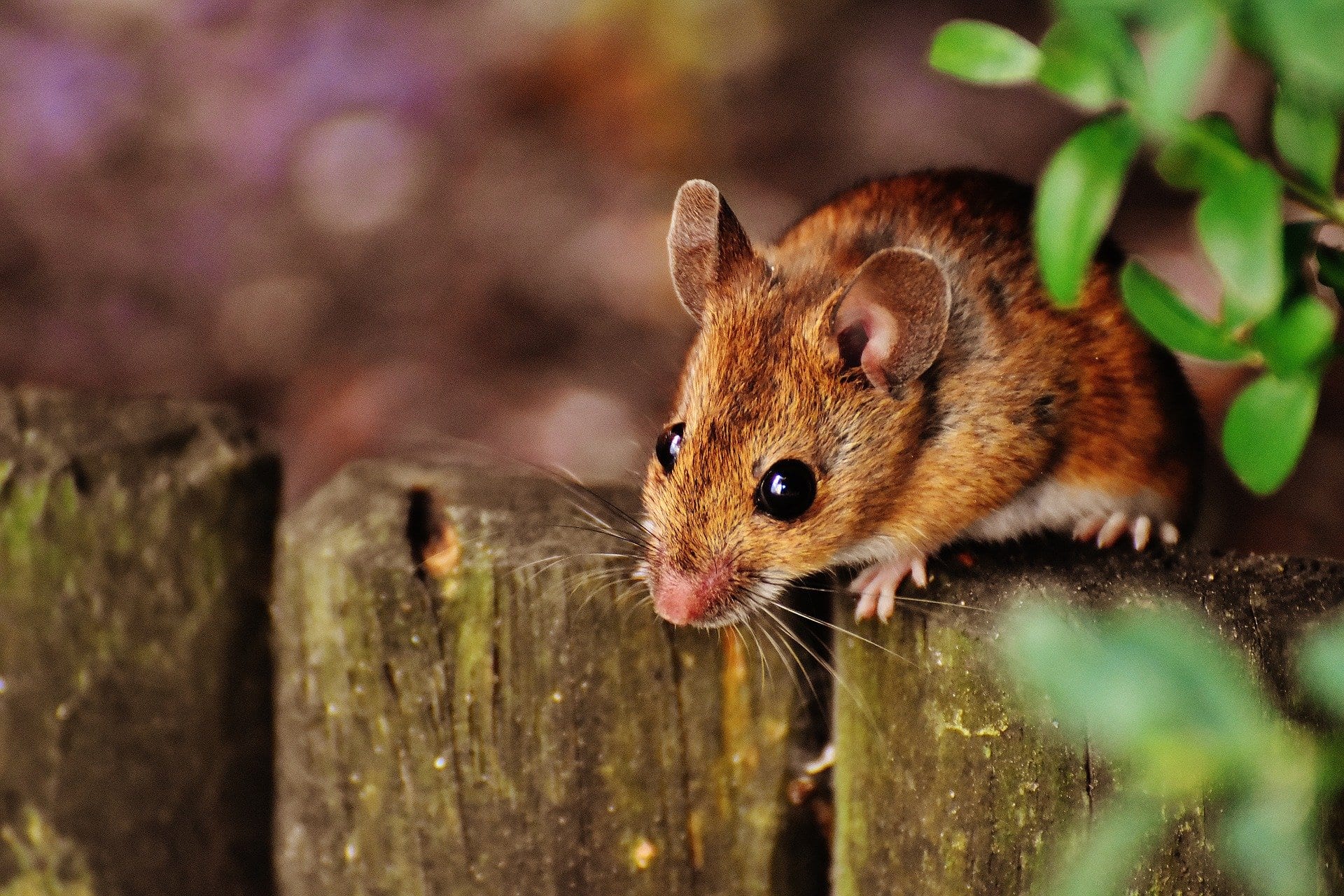

Mice and Rats: Health Hazards and How to Prevent Them
Mice and rats are some of the most damaging and dangerous pests to have in homes and businesses. Their habits cause extensive damage, and they are known carriers of many diseases and can pose as a health risk. It is important to be aware of the risks posed by mouse and rat infestations, so we put together a guide detailing the causes, symptoms, and prevention methods of the main rodent-borne illnesses in the United States.
Diseases
Hantavirus Pulmonary Syndrome
Hantavirus is a virus spread primarily by deer mice, white-footed mice, cotton rats, and rice rats. Typically, it is contracted after coming into direct contact with rodents or their urine and droppings, or by breathing in dust contaminated with urine or droppings. It can also be contracted through rodent bites, but that is not as common. Symptoms develop between 1 and 8 weeks after exposure, and they occur in two phases. Universal early symptoms include fatigue, fever, and muscle aches. Other early symptoms that occur in about half of all Hantavirus cases include chills, dizziness, headaches, abdominal pain, nausea, vomiting, and diarrhea. Late symptoms begin between 4 and 10 days after the early symptoms phase. These symptoms include coughing, shortness of breath, and lungs filling with fluid. Hantavirus has a mortality rate of 38%.
Leptospirosis
Leptospirosis is a bacteria spread by rodents, as well as other animals. It is contracted by eating or drinking contaminated foods and water, or by contact of skin or mucous membranes with contaminated soil or water. Symptoms will typically arrive abruptly between 2 days and 4 weeks after exposure to the bacteria, although some people show no symptoms at all. The illness may occur in two phases. The first phase may consist of fever, chills, abdominal pain, diarrhea, vomiting, headache, muscle aches, red eyes, jaundice, and rash. If a person experiences a second phase, it will be more severe and may occur after a period of recovery from the first phase. The second phase may include liver or kidney failure, respiratory distress, or meningitis. Without treatment, recovery from leptospirosis may take months, and in some cases can lead to death.
Pets can also get leptospirosis, although it is rare in cats. Symptoms that are commonly seen in dogs include fever, abdominal pain, vomiting, diarrhea, refusal to eat, severe weakness and muscle pain, stiffness, severe depression, and the inability to have puppies. Younger animals are usually affected more than older animals.
Lymphocytic Choriomeningitis (LCM)
Lymphocytic choriomeningitis, or LCM, is a disease caused by lymphocytic choriomeningitis virus, or LCMV. It is typically spread by house mice. It can also be spread by pet rodents, but that is not as common. An estimated 5% of house mice in the United States carry LCMV. It is contracted either by direct contact with rodents or rodent urine and droppings, or by breathing in dust contaminated by rodent urine and droppings. It can also be spread through bite wounds from infected rodents, although this is much rarer. LCM may occur in two phases. Symptoms of the first phase appear between 8 and 13 days after exposure. Common symptoms of the first phase include fever, nausea, vomiting, lack of appetite, malaise, headache, and muscle aches. Less common symptoms include sore throat, cough, chest pain, joint pain, testicular pain, and pain of the salivary glands. If a second phase occurs, it will do so after a few days of recovery from the first phase. Symptoms of the second phase include, meningitis, encephalitis, meningoencephalitis, acute hydrocephalus, and, in rare cases, myelitis. As LCM is an infection of the nervous system, it can cause temporary or permanent neurological damage, including nerve deafness and arthritis. If a pregnant woman becomes infected with LCMV, she may pass the infection to the fetus. This can result in fetal death during the first trimester, or serious and permanent birth defects during the second and third trimesters. LCM is rarely fatal, with a mortality rate of less than 1%.
Rat-Bite Fever (RBF)
Rat-bite fever, or RBF, is caused by one of two bacteria that are spread by rats and possibly mice as well. Only one of the two RBF-causing bacteria is found in the United States, and that is streptobacillus moniliformis, which causes streptobacillary RBF. As the name suggests, RBF is typically contracted through a bite or scratch wound from an infected rodent, or through contact with a dead rodent. It can also be contracted by eating or drinking food or water that is contaminated with rat droppings, in which case it is referred to as Haverhill fever. Symptoms appear between 3 days and 3 weeks after exposure to the bacteria, by which time any bite or scratch that caused the illness would likely be healed. Common symptoms of Streptobacillary RBF include fever, vomiting, headache, and muscle pain. In addition, approximately 5 out of 10 patients experience joint pain or swelling, and approximately 3 out of 4 patients experience a rash. This rash will appear on hands and feet and look like flat, reddened areas that have small bumps. People with Haverhill fever may also experience sore throat and more severe vomiting. Complications with Streptobacillary RBF include abscesses inside the body, liver or kidney infections, pneumonia, meningitis, and infections involving the heart. Approximately 1 out of 10 people who get Streptobacillary RBF die.
Salmonellosis
Salmonellosis is an infection caused by the bacteria salmonella, and can be spread in many ways, including by rats and mice. When spread by rats or mice, it is contracted by eating or drinking food or water that is contaminated with rat droppings. Symptoms typically appear between 6 hours and 6 days after exposure, although some people may not develop symptoms for several weeks. Symptoms usually last between 4 and 7 days, but can last for several weeks. Common symptoms of salmonellosis include fever, abdominal pain, and diarrhea. Some strains of salmonella can cause severe disease, as well as infections of the blood, bones, joints, nervous system, or urine.
Tularemia
Tularemia is caused by a bacteria and can be spread in many different ways, including by rats and mice. There are multiple forms of tularemia, which are categorized by how the bacteria was contracted. Symptoms vary by form, but all forms cause fever. Causes and symptoms of the main forms of tularemia are listed below. Please keep in mind that this list only includes the causes pertaining to rodents. The forms of tularemia that are listed may have other causes that are not included in this list.
- Ulceroglandular tularemia is caused by handling an infected animal. Symptoms include a skin ulcer where the bacteria entered the body, fever, chills, exhaustion, and swollen and painful lymph glands.
- Glandular tularemia is the same as ulceroglandular tularemia in all ways, except that it does not cause skin ulcers.
- Oculoglandular tularemia is caused by the bacteria entering through the eyes, usually when someone is butchering an infected animal and touches their eyes. Symptoms include irritation and inflammation of the eye, an ulcer on the inside of the eyelid, sensitivity to light, and swelling of the lymph glands in front of the ears.
- Oropharyngeal tularemia is caused by eating or drinking contaminated food or water. Symptoms include vomiting, diarrhea, sore throat, tonsillitis, mouth ulcers, and swollen lymph nodes in the neck.
- Pneumonic tularemia can be caused either by breathing in contaminated dust or aerosols, or by leaving another form of tularemia untreated, allowing it to spread through the bloodstream to the lungs. Pneumonic is the most serious form of tularemia. Symptoms include chest pain, difficulty breathing, and a dry cough.
- Typhoidal tularemia is a combination of general symptoms of tularemia, without any of the localized symptoms of other forms. Such general symptoms include extreme exhaustion, enlarged spleen or liver, vomiting, diarrhea, and pneumonia.
Most cases of tularemia can be treated fairly easily with antibiotics, although some cases are life-threatening.
For more information about these and other rodent-borne illnesses, visit this page of the CDC’s website.
Disease Prevention
Diseases spread by mice and rats can be avoided if necessary precautions are taken. For one, avoid any contact with rodents that are not pets. Take steps to make your home or business an environment where rodents cannot or do not want to live. Do not swim or wade in water that could potentially be contaminated with rodent urine or feces. If your job requires you to come into contact with anything that is potentially contaminated- such as soil, water, or infested buildings- always wear protective footwear and clothing. When mowing, check the area beforehand for any sick or dead rodents, and do not mow over them if there are any. Clean up any rodent nests, as well as any urine and rodent feces. For information on how to safely clean up dead rodents, rodent nests, or rodent urine and droppings, visit this page on the CDC’s website. When handling nests or wild rodents, dead or alive, always wear gloves and wash your hands with soap and warm water after.
Although it is rare, diseases can also be spread by pet rodents, so precautions should be taken when handling them as well. When choosing a rodent pet from a pet store or breeder, avoid any that look sick or otherwise unwell. Do not choose any that are in the same cage as rodents that look unwell, either. If possible, clean your pet’s habitat, food and water bowls, toys, and any other objects outdoors. If outdoor cleaning is not an option, then use a large bathtub or sink that can be easily disinfected. Avoid using a kitchen sink. Always wash your hands with soap and warm water after handling your pet or its belongings.
If you are bitten or scratched by a rodent, wild or domestic, clean the wound immediately with soap and warm water. Contact a health care provider as soon as possible and tell the provider about the bite or scratch. Get treatment if need be.
Damage
In addition to spreading illnesses, mice and rats tend to cause extensive, and usually expensive, damage to homes and businesses. They will chew through just about anything they can get their teeth into, including walls, floors, insulation, pipes, wires, upholstery, important documents, family heirlooms, and more. The damage to insulation can make temperature regulation very difficult and expensive. Lack of insulation means having to run air conditioners and heaters much more than usual, in addition to the fact that insulation can be expensive to replace. Chewed wires are quite dangerous, and actually cause about 25% of the house fires in the United States each year. Mice and rats also cause fire risks when they tunnel into and build nests inside of appliances, causing them to short-circuit or malfunction. When an infestation is severe, the urine of the mice or rats can soak into wood and compromise the structural integrity of a building. For information on how to prevent infestations, check out our mouse and rat FAQ pages
A few mice or rats can quickly turn into an infestation. Rodent infestations are not something to be taken lightly or ignored, as they can be potentially dangerous. If you think you have mice or rats in your home or business, call our experts today and we’ll send a technician out right away.
Click here for more information regarding Mice and here for more information about rat pest control.






